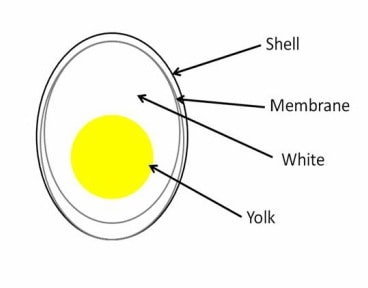Egg-traordinary!
How to make a bouncy and glowing egg!
What you need:
Egg, glass, vinegar and a light source (e.g., torch).
What to do:
- Carefully put an egg into a glass.
- Pour vinegar over it, it should cover an egg completely.
- Leave it for at least 24 hours. If an egg is fresh it will probably rise up, so try to rotate it gently using a spoon.
- After 24 hours, remove the egg from the solution. Rinse it with a water.
Things to think about:
How high can it bounce? At what distance will it break when it falls? (Try this outside!)
What happens when you put it by a light source? Why do you think this happens?
What is the shortest amount of time the egg needs to be submerged in vinegar for it to still bounce?
Does the amount of vinegar make a difference?
How could you record you findings and make it a fair test?
ANATOMY OF AN EGG
Eggshell is made primarily out of calcium carbonatecrystals (95-97%) which are connected by a protein matrix. That protein matrix gives strength to a shell, without them shell could break apart. Eggshell is protecting an egg from mechanical damage but also bacteria and dust.
The membrane is made out of proteins and it protects inner part of an egg from bacterial infections. There are actually two membranes: outer and inner and they are surprisingly strong.
Albumen or egg white consists of 40 different proteins in addition to water (90%). It’s main purpose is to provide additional nutrition to the embryo as well as protecting it.
The yolk is the main source of nutrition for an embryo. It consists of proteins, vitamins, minerals, fat and some water.
How it works:
If we soak an egg in vinegar, we will start an acid-base reaction. The acetic acid from vinegar reacts with calcium carbonate (base) from an eggshell. Products of that reaction are calcium acetate, water and carbon dioxide. You can notice bubbles forming on the eggshell surface, that’s the sign of newly created carbon dioxide. After some time, the shell is completely dissolved and all that keeps an egg together are its membranes.

Comments
Post a Comment